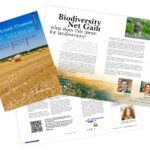Significant reforms to Inheritance Tax were introduced in the Budget on 30th October 2024. We currently do not have the detail of the proposals, with a consultation due in early 2025. We do however have the ‘headlines’ of the changes to Agricultural Property Relief (APR) and Business Property Relief (BPR).
It is proposed that the changes will become law on 6 April 2026. Prior to 6th April 2026, there are anti forestalling rules in place. These provide that gifts into trust or outright to an individual which are made after 30 October 2024, and where the person making the gift dies after 6 April 2026, will be subject to the new rules.
APR and BPR provide a relief from Inheritance tax by reducing the value of the estate subject to tax at either 100% so that the entire asset value is free of inheritance tax, or by 50% so that half of the asset value would be subject to inheritance tax (providing an effective rate of tax on those assets of 20%).
Current Position
Agricultural Property Relief (APR)
APR is available on the agricultural value of land and buildings within their estate where they have either:
- Owned and occupied the land for two years prior to death for the purposes of agriculture (e.g. have farmed the land themselves, either as a sole trader, in a partnership or limited company) OR
- Owned the land for seven years prior to death with it being occupied by another for the purposes of agriculture. (e.g. where land may be let on a Farm Business Tenancy).
There are two rates of relief of APR:
- 100% for land and buildings in which the deceased owner of the land could obtain vacant possession within 24 months of death.
- 50% in all other cases
The farmhouse would also be able to benefit from APR if it were:
- occupied with the land for the purposes of Agriculture
- the centre of farming operations.
- of a character appropriate to the land farmed with the house
Generally, APR on a farmhouse is limited to 70% of the full market value.
Business Property Relief (BPR)
BPR is available on interests in trading businesses or assets used in those businesses.
Where land may have a market value in excess of the agricultural value, for example, where there may be potential for development, provided the land formed part of the trading farming business (and met requirements for a balance between trading and non-trading assets), BPR could be claimed in addition to APR.
The deceased must have owned the business or interest in the business for two years prior to death.
BPR would also be available to reduce the inheritance tax due on other assets within the farm partnership including live and deadstock and cash used for the purposes of the farming operation.
As for APR, there are two rates of relief for BPR:
- 100% for:
- A business carried on by a sole trader
- An interest in a business such as a partnership share (which includes land on the balance sheet of a partnership)
- Unquoted company shares
- 50% for:
- Land, buildings and machinery owned by the deceased which were used wholly or mainly in a company controlled by them
- Land, buildings and machinery owned by the deceased which were used wholly or mainly in a partnership controlled by them
- Quoted company shares which gave the deceased control of the company
Where gifts are made in lifetime, the person making the gift must survive for 7 years from the date of the gift, otherwise, the value of the asset gifted (at the date of the gift) will be brought back into account on death for Inheritance Tax purposes.
Announced changes to Agricultural Property Relief and Business Property Relief
APR and BPR claims will now be limited to £1,000,000 per person.
- Partnership capital will form part of the £1,000,000 allowance and so live and deadstock will potentially be subject to tax.
- The allowance will be apportioned proportionately between the qualifying agricultural assets and the trading business assets.
- The assets must meet the APR/BPR requirements as set out above.
- This allowance is not transferable between spouses.
Any assets in excess of £1,000,000 which would otherwise qualify for APR or BPR will receive 50% relief, meaning that they will be subject to tax at an effective rate of 20%.
Tax will be payable in 10 annual instalments and will be free of interest provided each instalment is paid on time.
There are also anti forestalling rules now in place. These provide that where a gift is made after 30 October 2024, and the person making the gift then dies after 6 April 2026 (and within 7 years of making the gift), those gifts will also be subject to the new rules.
What is the impact?
Historically, where assets which benefit from APR or BPR are held by an individual, the general advice has been to ensure that APR/BPR is applicable then to retain those assets and not gift them in lifetime, as they would receive complete exemption from Inheritance tax on death, and any lifetime gift would potentially trigger a capital gains tax charge.
It is now advisable to give consideration to gifting assets away in lifetime, once appropriate advice on capital gains tax has been obtained.
The use of trusts may no longer be as attractive for lifetime planning with assets benefitting from APR and BPR, as there will be an immediate charge on placing the assets in to trust of 10% on any value in excess of £1,000,000.
Consideration should now be given to:
- Lifetime gifting where possible.
- In order for the value of the assets gifted to fall out of an estate, the person making the gift (‘donor’) must have survived by 7 years from the date of the gift.
- Where gifts are made, the donor must have given up all benefit in the assets gifted. It is essential that careful advice is taken to ensure that the donor does not reserve a benefit (e.g. profit taken from a partnership share gifted away).
- Equalisation of assets between spouses to ensure that both can use their £1,000,000 allowance
- Updating of Wills and Partnership agreements to ensure that the £1,000,000 allowance is utilised either by way of outright gifts to children or the use of a trust to allow a surviving spouse to benefit and provide a greater degree of protection.
Other available allowances
The remaining allowances available to reduce the IHT due are:
£325,000 Nil Rate Band
- Transferable between spouses
£175,000 Residence Nil Rate Band
- Transferable between spouses
- Only available where assets pass to direct descendants and there is a property (although there are complex additional rules where there may not be a property.
- Where the value of an estate is worth in excess of £2,000,000 (the threshold), the allowance is reduced by £1 for every £2 the estate is valued in excess of the threshold.
- Where APR is claimed on a farmhouse, the residence nil rate band can only be claimed on the element of the farmhouse which relates to Market Value. For example, with a farmhouse worth £500,000, APR claimed on 70% of value (£350,000), only £150,000 of the Residence Nil Rate Band could be claimed.
You may have seen reference to £3,000,000 of allowances being available to a farming estate. This total amount will only be available in specific circumstances where:
- You are married
- You have made gifts utilising the full £1,000,000 on the death of the first spouse
- The surviving spouse is left with an estate of £2,000,000 or less.
In order to maximise all available allowances, careful planning will need to be undertaken, and consideration given to gifting in lifetime.






